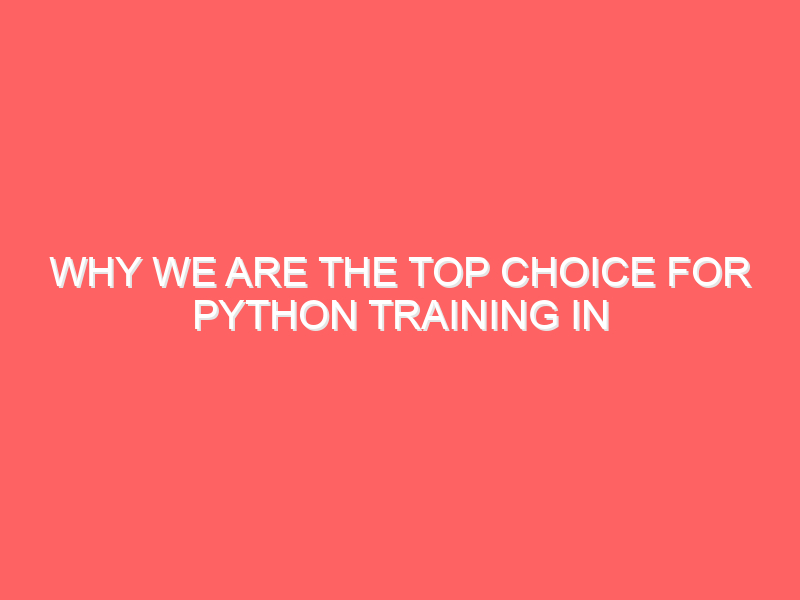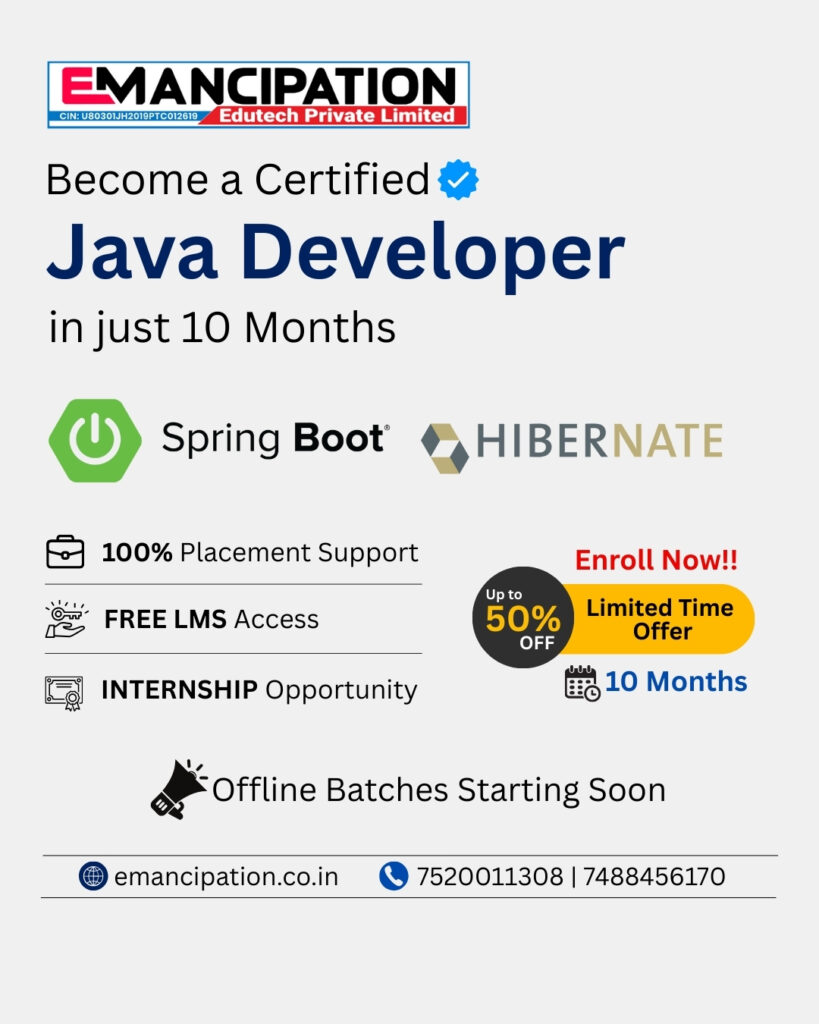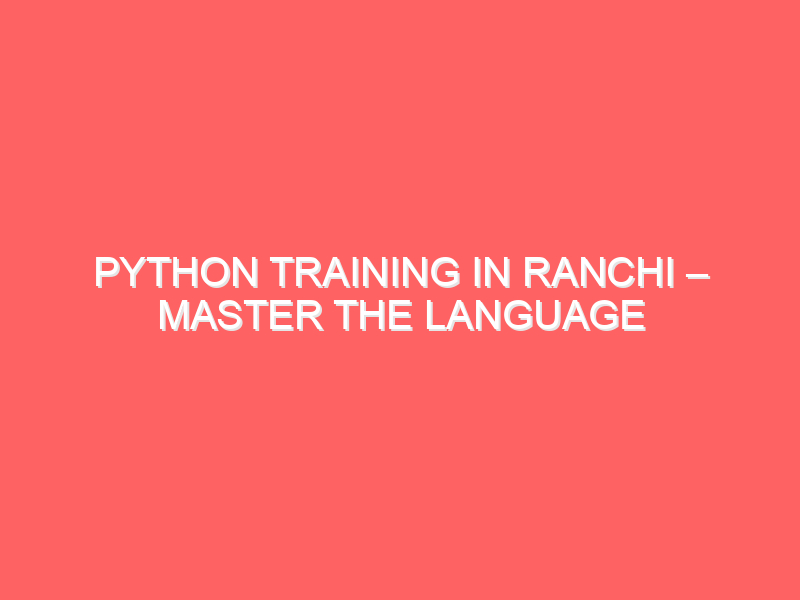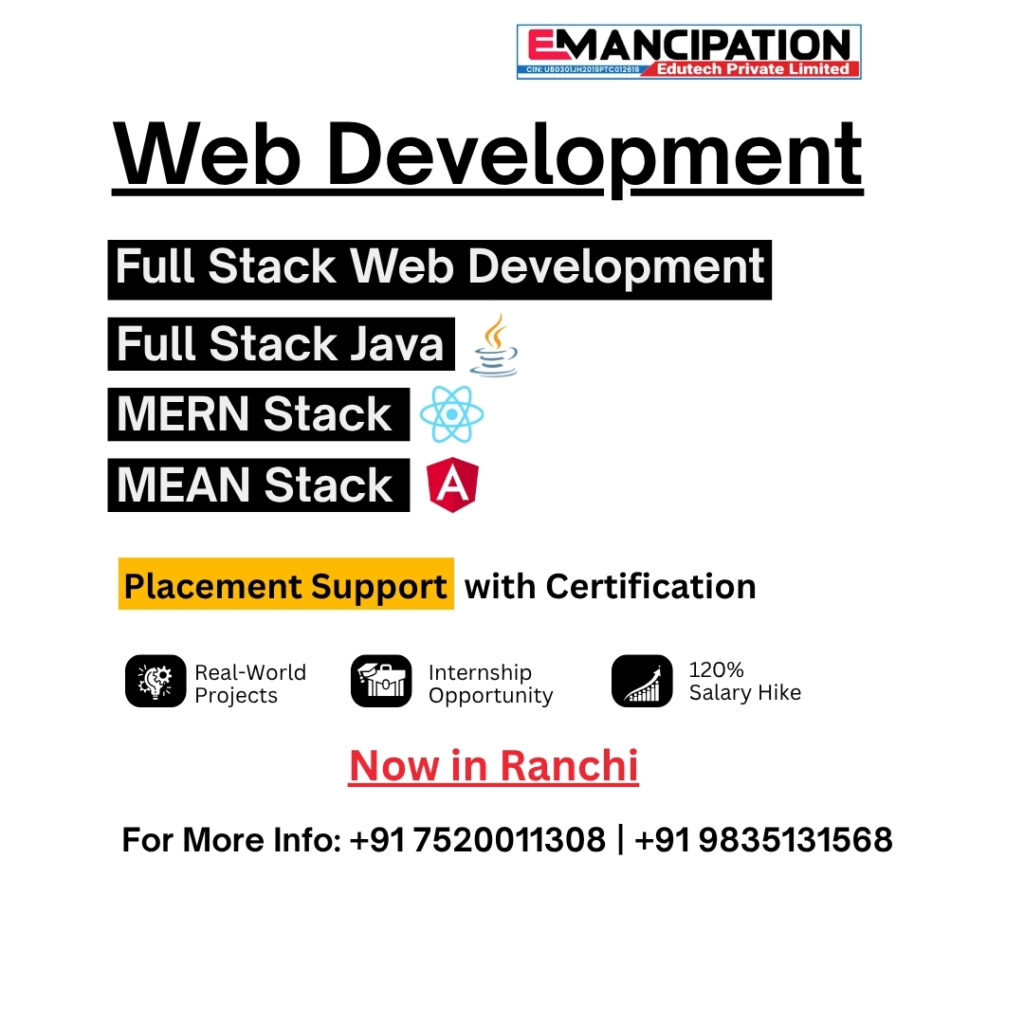Why We Are the Top Choice for Python Training in Ranchi
Looking for the best Python training in Ranchi? Discover how Emancipation Edutech Pvt Ltd transforms beginners into job-ready developers with expert mentorship, live projects, and 100% placement support. Introduction In the rapidly evolving landscape of technology, one language has emerged as the undisputed king: Python. From the algorithms powering your favorite social media feeds to the data analytics driving global business decisions, Python is everywhere. But for students and job seekers in Jharkhand, the question isn’t just why you should learn it—it’s where you should learn it to guarantee a successful career. As the tech ecosystem in our city grows, the demand for skilled developers is at an all-time high. If you are searching for Python training in Ranchi that goes beyond mere textbook theory, you are in the right place. At Emancipation Edutech Pvt Ltd, we don’t just teach you to write code; we teach you to think like a software engineer, ensuring you are ready to tackle the challenges of the modern IT industry. Why Python? The Golden Ticket for Ranchi’s Youth Before diving into where to learn, let’s establish why this path is crucial. Python is no longer just an “add-on” skill; it is a fundamental requirement for some of the highest-paying roles in the market. Emancipation Edutech: More Than Just an Institute When looking for Python training in Ranchi, you will find many options. However, Emancipation Edutech Pvt Ltd stands apart as a beacon of quality and practical learning in Tharpakhna. Here is why hundreds of students—from complete beginners to working professionals—choose us to launch their careers. 1. Mentorship That Matters We believe that coding cannot be learned in isolation. It requires guidance. Our director, Mr. Subir Chakraborty, and our expert faculty bring years of industry experience to the classroom. Unlike generic online courses where you are just a number, we offer a personalized learning environment. We know your name, we understand your career goals, and we tailor our guidance to help you achieve them. 2. A Curriculum Built for the Real World Many institutes stick to outdated syllabuses. At Emancipation, our curriculum is “Outcome-Driven.” We continuously update our modules to match what companies are hiring for right now. 3. Theory is Good, Practice is Better You cannot learn to swim by reading a book, and you cannot learn Python by watching videos. Our philosophy is simple: Code Daily. Our students don’t just pass exams; they build portfolios. By the time you complete your Python training in Ranchi with us, you will have developed: This project-based approach is why our students perform exceptionally well in technical interviews. The Student Experience: Flexible and Supportive We understand that our students lead busy lives. Whether you are a college student balancing semester exams or a working professional looking to upskill, we have a schedule that works for you. Student Success Story: “I came to Emancipation with zero coding knowledge. The hands-on projects and Subir Sir’s patience changed everything for me. Today, I’m working as a backend developer, and I owe it to the solid foundation I built here.” — Rahul A., Emancipation Alumni Who Should Join This Course? Our Python program is designed to be inclusive and comprehensive. It is the perfect fit for: The Emancipation Advantage Locating the best Python training in Ranchi can be overwhelming, but the choice becomes clear when you look at the results. We pride ourselves on being a “Code & Connect” hub—a place where learning meets networking. Our center at Plaza Chowk, Tharpakhna, is equipped with a modern lab environment that encourages collaboration. When you join Emancipation Edutech, you aren’t just joining a class; you are joining a community of aspiring technologists who support each other’s growth. Conclusion: Your Future Starts with a Single Line of Code The tech industry is waiting for you, but it won’t wait forever. The gap between “wanting a job” and “getting a job” is a skill set. Python is that skill set. Don’t settle for average training. Choose the institute that invests in your success. Choose Emancipation Edutech Pvt Ltd for the most comprehensive, practical, and career-focused Python training in Ranchi. Ready to transform your career? Stop waiting and start coding. Visit our center at Plaza Chowk today or contact us to book a free counseling session. Let’s build your future, one line of code at a time.
Why We Are the Top Choice for Python Training in Ranchi Read More »







